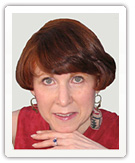e-Tips
Generational Appeal of the Best Places to Work
Many of us have an intuitive sense about what makes a “best place to work.” Various surveys track what employees are looking for to join and stay, and those items shift in rank from generation to generation depending on existing social, political and economic circumstances.
The latest “Best Places to Work” study I have seen, just published in mid-December, is from Crain’s New York Business, based on a statistical analysis of this year’s internal surveys and benefits offered by New York area organizations of all sizes. It was conducted by Best Companies Group, surveying 13, 991 employees of over 150 companies participating (total score compiled by 75% employee surveys results; 25% employer responses).
Out of the 40 winning organizations, 6 are law firms, 5 are accounting firms, 3 are architecture and/or engineering firms and there are a variety of types of consulting firms. Almost 75% have had lay-offs in the last year; nevertheless 88% of the survivors said they “feel valued,” and even more said they had confidence in their organization’s leadership.
In the summaries of why each winner was chosen, characteristics that have strong appeal to the younger generations dominated: opportunity, training and coaching, mentoring, fun, transparency and relationships with the senior people. The highlighted perks were not largely financial, and only one organization – Goldman Sachs – was on the winners list because of compensation. (It was so above and beyond any other in that respect.)
If you’d like to join the ranks of great places to work and attract and retain the top work force, I’ve compiled the winning ingredients (in no particular rank order) for your guidance:
- Cultures that discourage workaholics.
- Philosophy of “treat them the way you want them to treat clients.”
- A clear mission that attracts and retains people who believe in what the organization does and feel their work is meaningful.
- A business that “has a soul,” demonstrated in pro bono work and incentive to do public interest work.
- Open communications especially in times of change (growth or shrinkage) among all levels.
- Non-financial recognition widely conveyed internally.
- Career opportunities to branch out to other functions in an organization.
- Focus on promotions from within.
- Opportunities to work and develop relationships with senior people.
- A meritocracy with training, coaching and well defined career paths.
Phyllis
© Phyllis Weiss Haserot, 2010. All rights reserved.
* The generational chronology for easy reference: Generations are defined by the similar formative influences – social, cultural, political, economic – that existed as the individuals of particular birth cohorts were growing up. Given that premise, the age breakdowns for each of the four generations currently in the workplace are approximately:
Traditionalists: born 1925-1942
Baby Boomers born 1943-1962
Generation X born 1963-1978
Generation Y/Millennials born 1979-1998

